
NetSuite’s Custom Segment feature is easy to set up and provides additional reporting capability above the standard three Segments. Custom Segments also allow you to leverage Custom Record functionality.
Classifications are Department, Location, and Class. Custom Segments provide additional reporting dimensions.
Following is a description of how to create a Custom Segment and Apply it to desired Transactions to be available for reporting.
Use Case:
- Fictional Company is Valley Dental Supply.
- Valley sells dental supplies: chairs, x-ray machines, clinical instruments, surgical clothing and Lab Services.
- Their primary revenue stream is Trade Shows. Every Trade Show has a unique identifier, or “Show Code”.
- Valley Dental wants to track Gross Profit per Trade Show.
To accomplish the goal of tracking Gross Profit by Trade Show, we will create a Custom Segment called “Show Code”. This Custom Segment will then be applied to Invoice and Purchase Order transactions to track revenue and expense associated with a given Show Code.
Assumptions:
- This example assumes that the standard Department, Class and Location Segments are already being used on Invoices and Purchase Orders.
- Menu paths are assuming the Administrator Login is used.
Create Custom Segment
Navigate to Customization >> List, Records, & Fields >> Custom Segments >> New
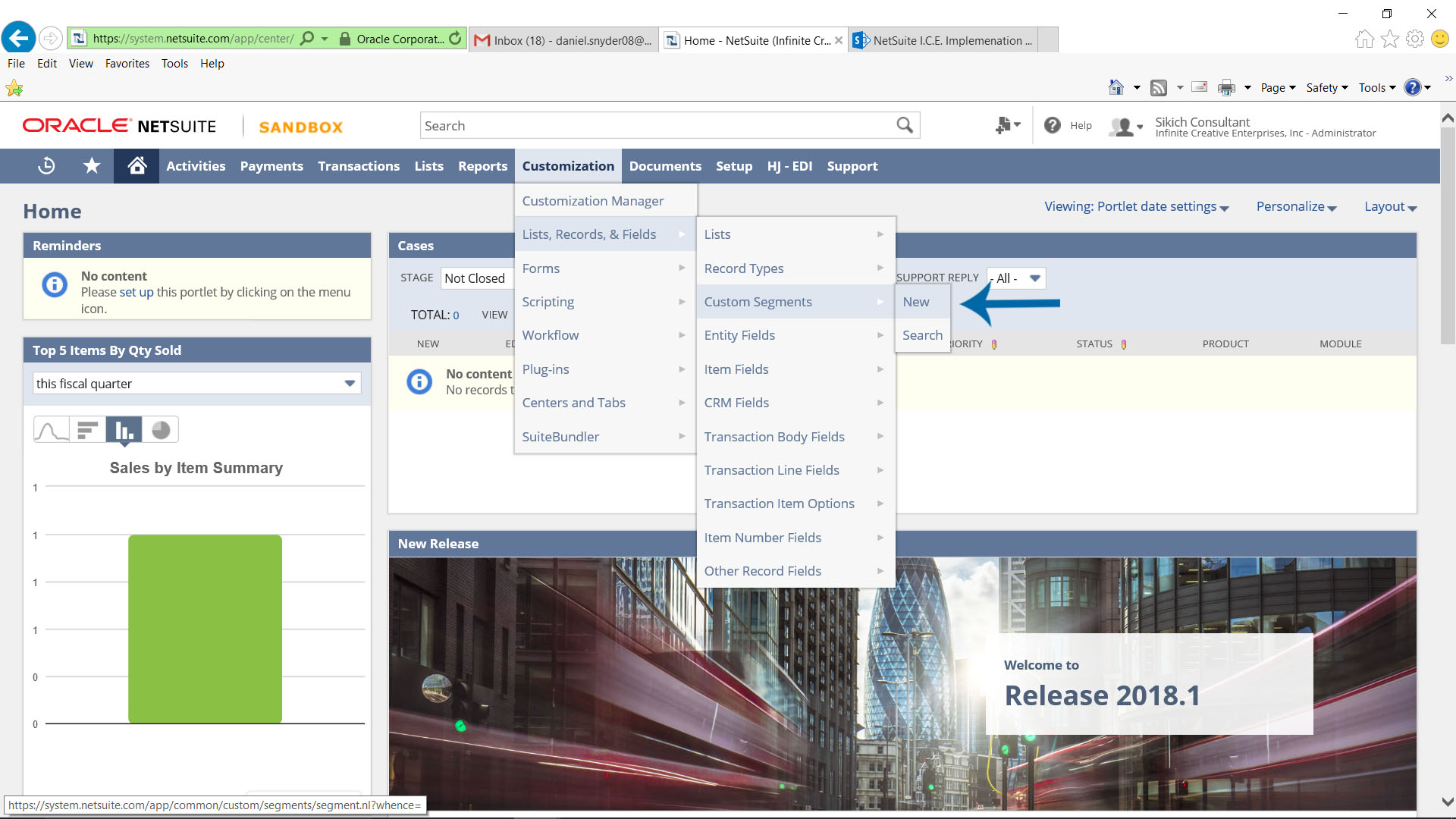
In the Primary Information Section, type Show Code in the Label field. Also, enter an ID for the segment, use the naming convention of underscore, company abbreviation, underscore, segment name. In this case, we will ignore the Filtered by box. That makes this Segment only available when certain Classifications are being used on a Transaction. Set Type to List/Record.

If it is desired to have this Segment be visible on the GL Impact page, just like Department, Location, and Class, then check the GL Impact box in the Accounting Section. Valley Dental wants to see Show Code on the GL Impact page.
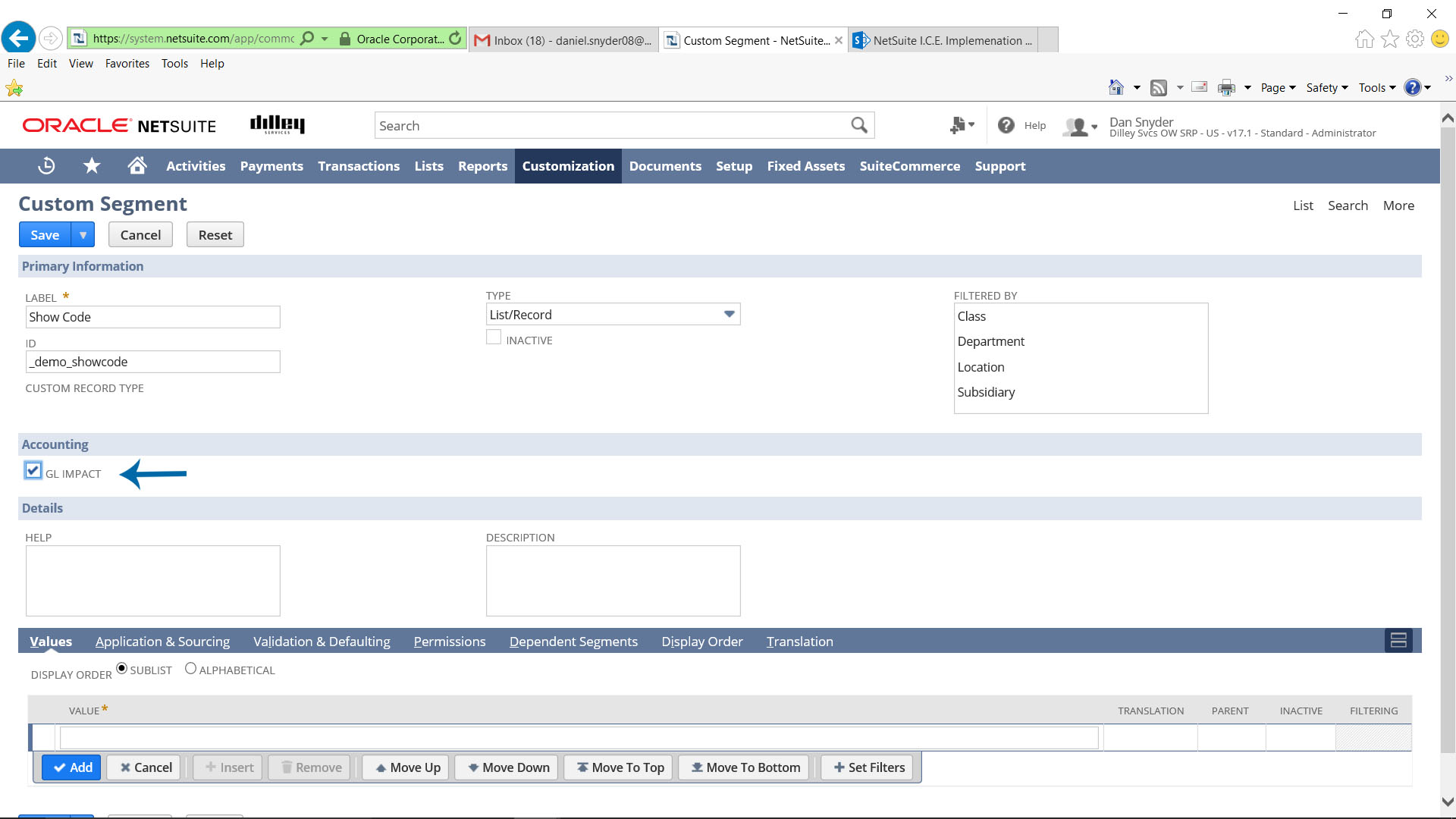
In the Details Section, add text in the Help box. This describes for others what this is. On Forms where this Segment will be visible, clicking the Field Label will display the text in the Help box. The Description is only visible on this page.
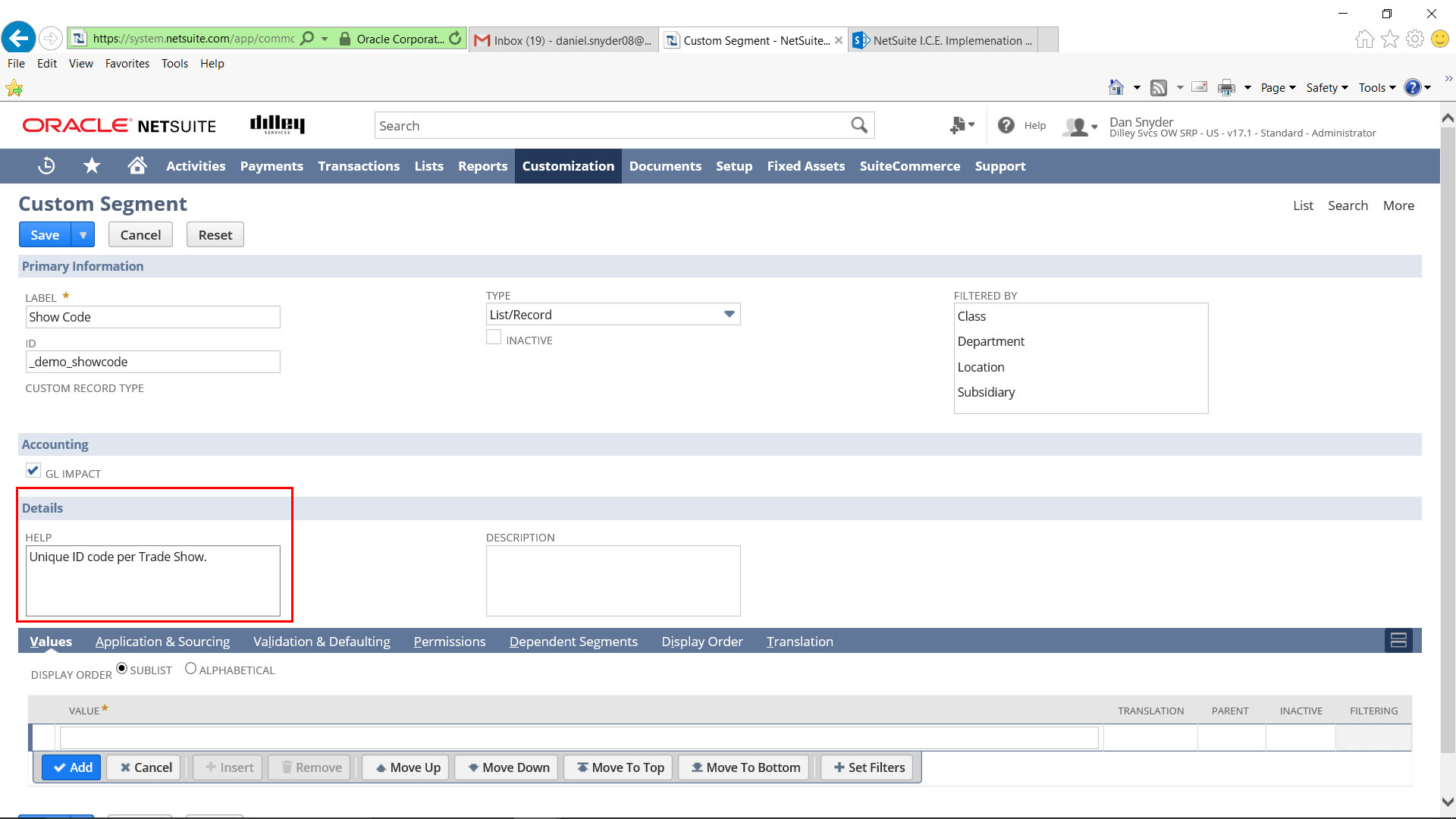
Under the Values subtab, add known Show Codes. Select from the drop-down and click OK on each line. The Display order subtab allows you to dictate how these are viewed in dropdown lists. Selecting Sublist sorts the custom segment values as they are entered when creating the Custom Segment. Selecting Alphabetical sorts alphabetically upon saving regardless of the order the custom segment values are entered.
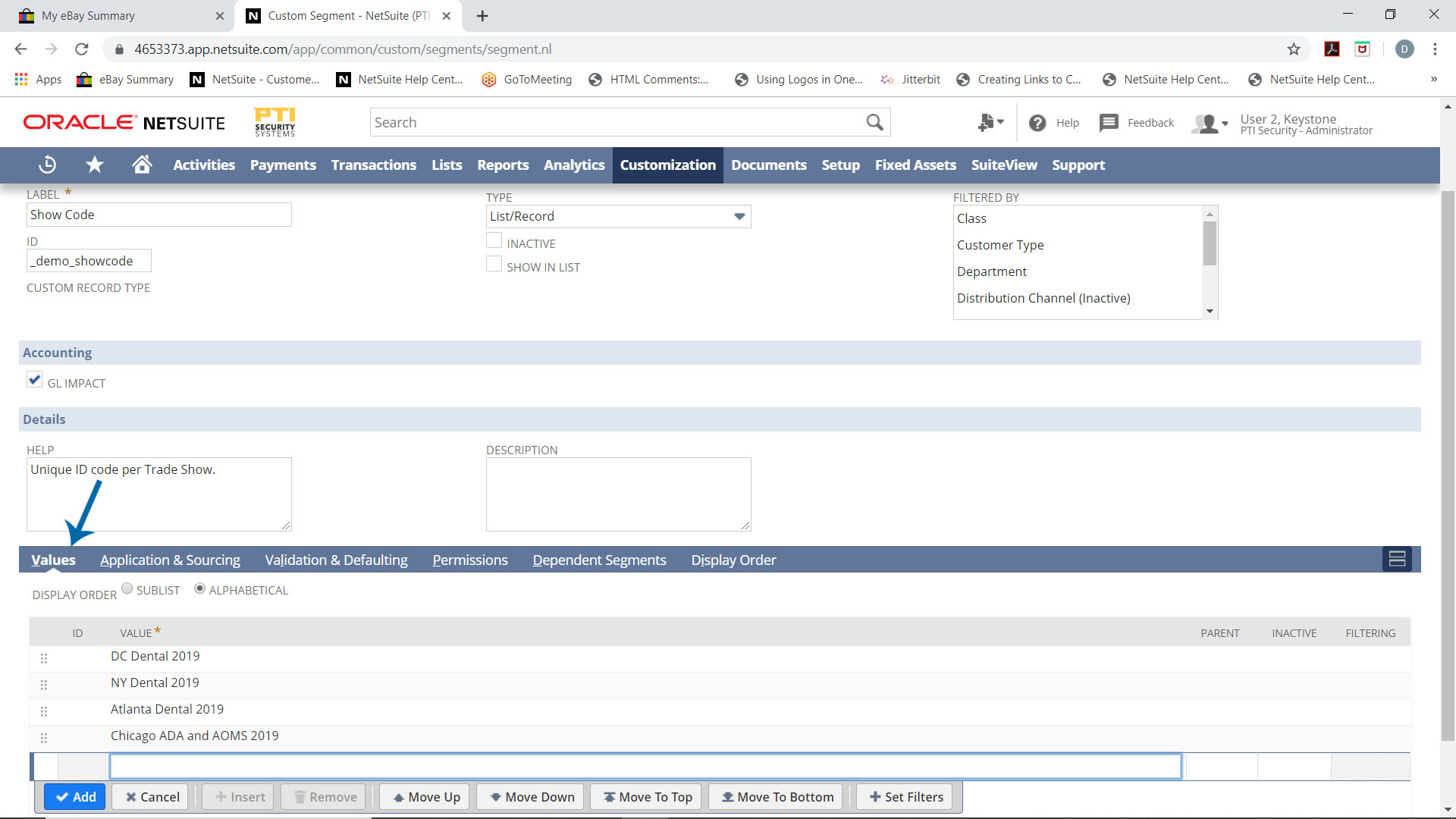
Apply Segment to Transactions
Under the Application & Sourcing Subtab is where you will define which Transaction Forms this Segment will be available on. For this scenario go right to the Application Section. This is where you select if you want the Segment available to Sales and/or Purchase Transactions. Here check both since Valley wants this available on Sales Orders, Invoices, Purchase Orders, and Vendor Bills. Valley also wants the Show Code segment available on Expense Reports from Employees. That box will also be checked in the list of additional Transactions in the Application Section.

Save the Custom Segment. The Segment is now available as a field in the Header (or Main Line) on the selected Transaction Forms.

Now when Sale and Purchase Transactions are entered, a Show Code can be assigned. By default, the Custom Segment is added to the Custom subtab of Transaction Forms. Customize the form, if desired, and Move the Show Code to the Main Subtab
Navigate to Sales Invoice Form, then click Customize Form:
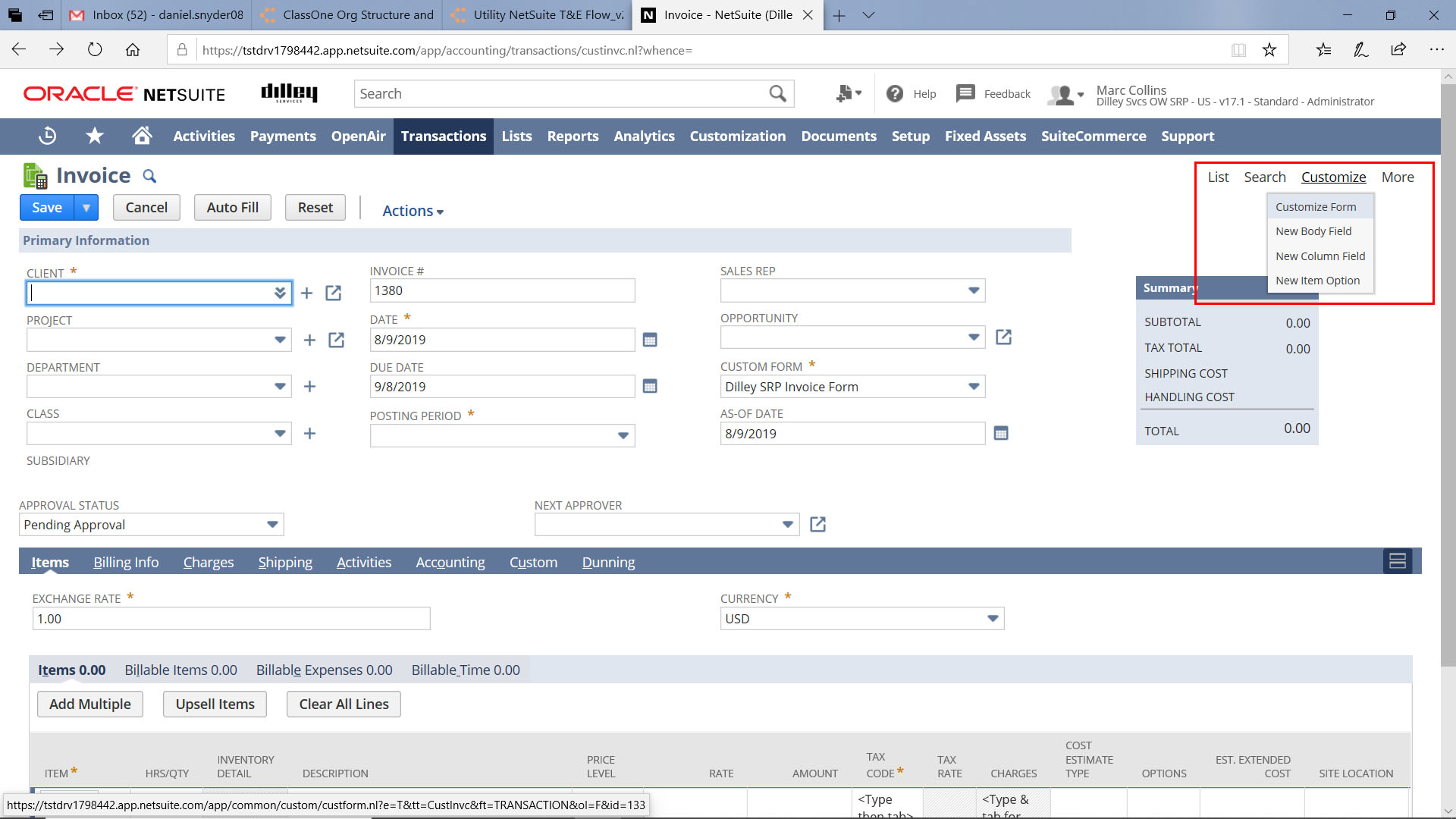
At the bottom of the Form Page, click the button titled Move Elements Between Subtabs:
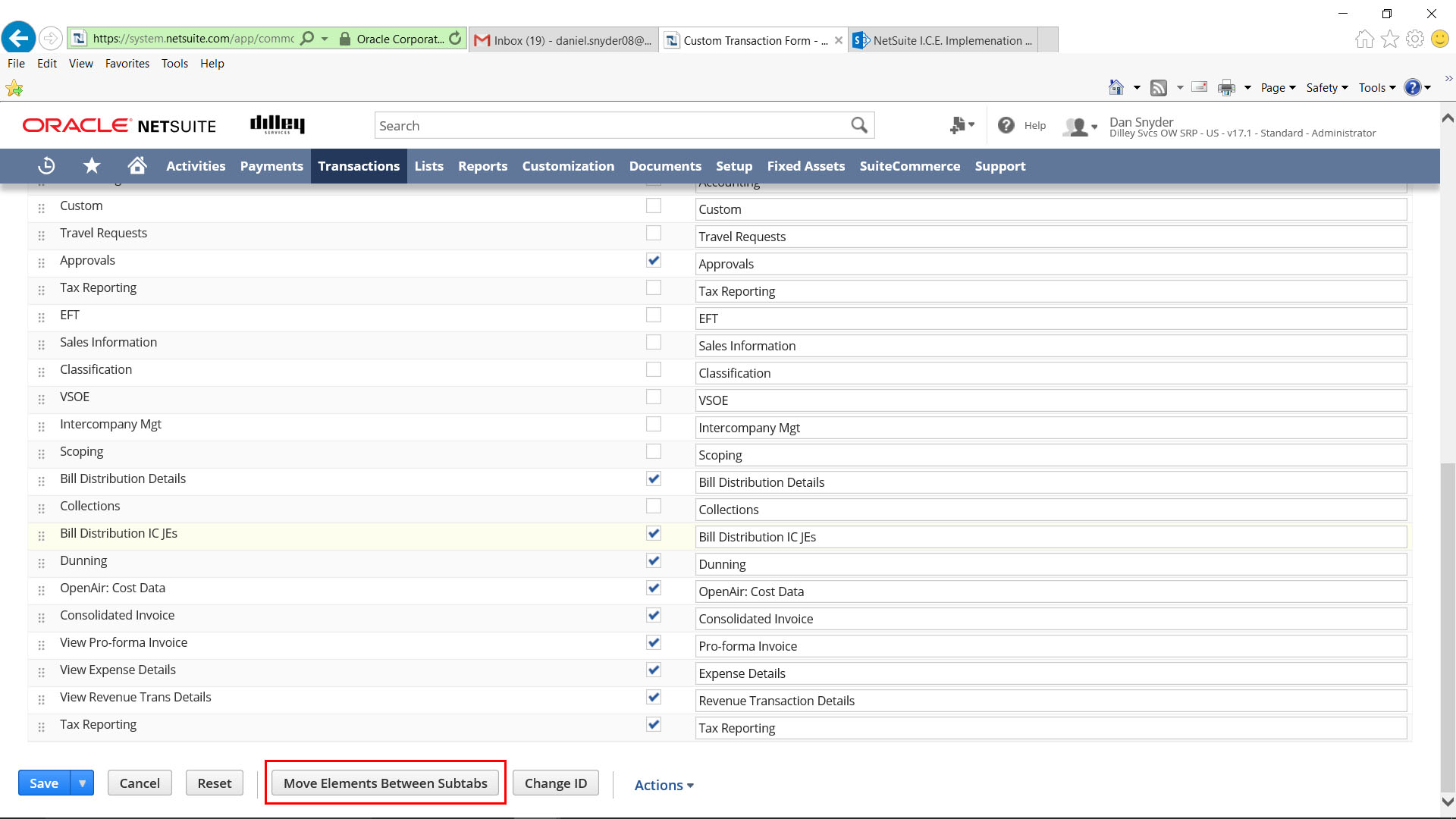
Go to the Custom tab and select Show Code. Then in the Subtab Dropdown select Main. Click Save. You will be taken back to the Form Page, Save again.
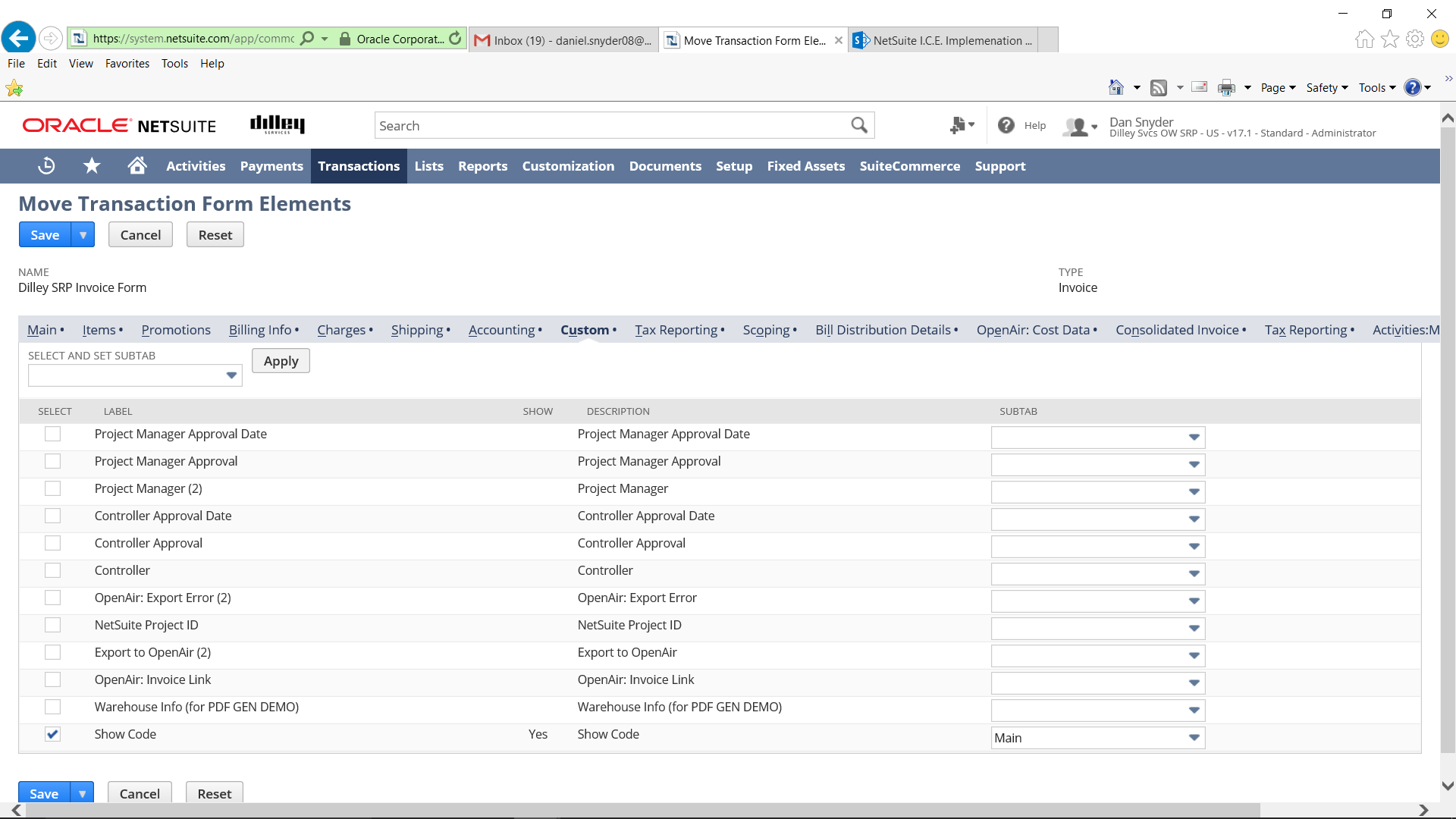
Sales Invoice Entered with Show Code:
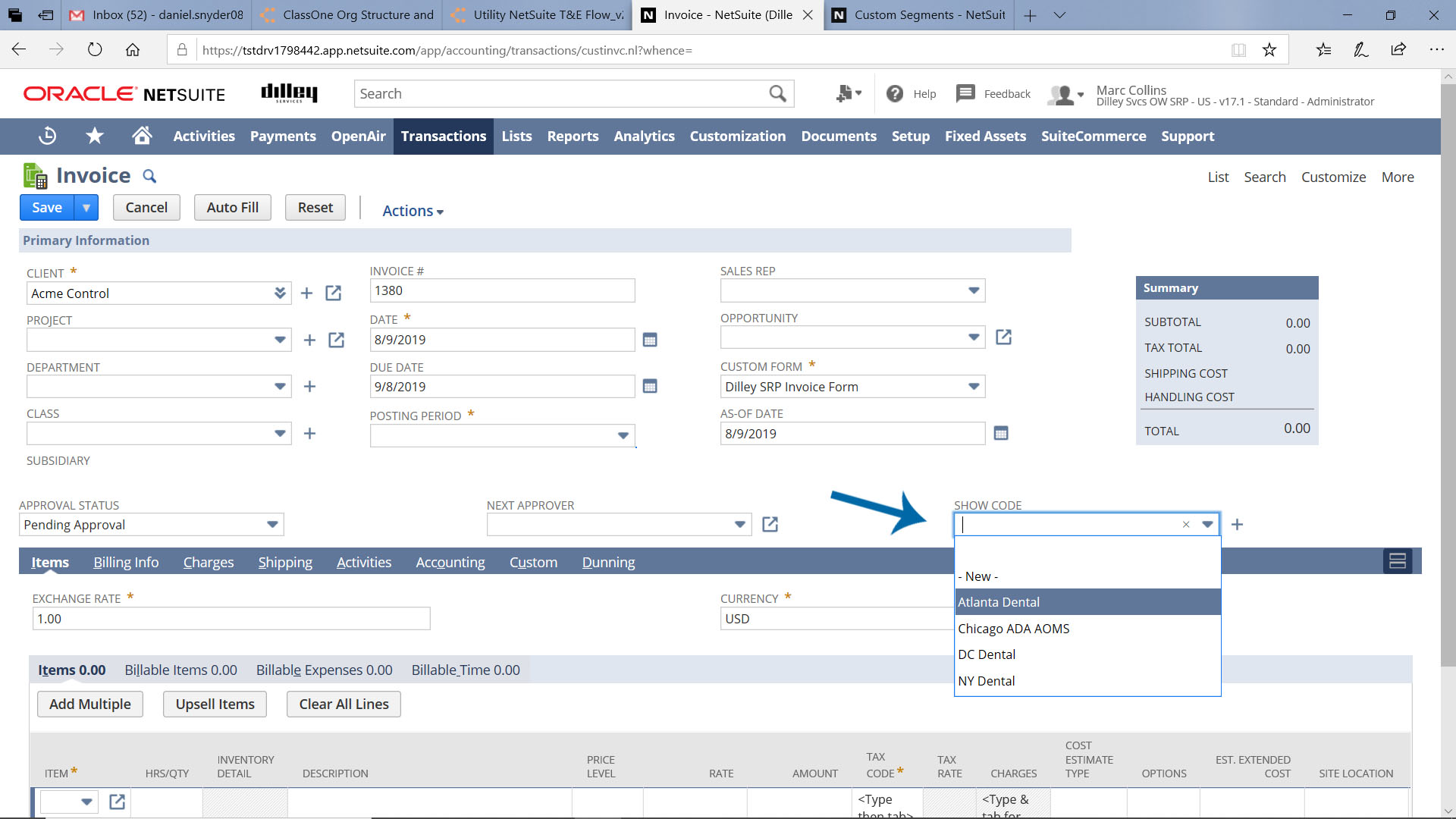
You will now see the Custom Segment in the GL Impact and how it’s impacted on the invoice:

This data is then available for reporting on Financial Reports and Transaction Reports. Custom Segments also are available as Custom Record Types. That way additional information can be stored in NetSuite. For example, the Start and End Date of the Trade Show, the Sales Rep assigned, the Location of the Show, and Projected Revenue.
For more information on NetSuite, or for a Free Consultation, contact Keystone today!
![]()
Keystone. Your NetSuite solution provider and integration partner.
Call – 866-546-7227 | Email – info@keystonebusinessservices.net





